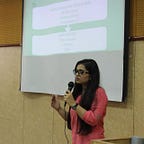Ribi- storytelling robot
Building web APIs made simple!
The problem- Parents sometimes do not have time to entertain their kids but they would rather not let their kids have screen time.
Around 64 percent of parents surveyed with children younger than seven read to their kids at any time, and a third of those parents never break out the books at night. One in five parents that do read to their children said they read bedtimes stories every night, but four percent of the parents surveyed do not even own a book. That’s around a quarter of a million children who don’t have a book to read. The study results show that almost half of children today prefer watching TV, playing with toys or computer games to being read a bedtime story. However, a survey from littlewoods.com says that 91 percent of parents were read to when they were children. The lack of reading at home may have a detrimental effect on children’s development. Data from a study by the Institute of Education shows that reading books between the ages of 10 and 16 significantly improves vocabulary and spelling skills and makes the children better at math.
Here are some storyboards that illustrate the problem better:
A possible solution- Children treat social robots more like social actors than passive (or even interactive) agents rendered on a screen. As a result, their brains work more similarly to when they are in the presence of social agents (i.e. when they are developing social skill and learning from other agents).
Ribi has the following specifications:
-Identifies the child and the parent
-Programmed/configured by a parent but interacts with a child.
-Stories told in an interactive way where the child is asked questions or tells parts of the story.
-Stories could be built into the robot by the parent
-Parents can track their child’s progress
A good approach is to simplify your idea into milestones and prototype versions.
Prototype 1:
The initial prototype made focussed on identifying the parent and child through computer vision.
Features developed:- chatbot to read books
-voice interface to talk to the user and read text from books (eSpeak for Windows)
-face recognition to identify child and parent (opencv,numpy,scipy,dlib)
Here is a good resource to use face recognition API with python
Since the first prototype was running locally on Windows 8 platform, eSpeak was used for voice integration.
The Parent Login will update the child’s progress and choice of updating the robot’s book-database.
The Child Login will give a choice of revising previously started book or starting a new book.
Prototype 2:
Building web API and integrating Python functionalities-
Ribi was given a face structure and animations with HTML, CSS, JS. The code can be found here.
Both the functionalities of detecting face location and recognizing the individual in front of the screen was done with integrating Python web service and firebase.
Input channels:
Speech (speech synthesis with JS)
Camera (Python web service)
Output channels:
Gaze(responds to users’ direction of motion)
Listening gesture (CSS animation)
Speaking gesture (CSS animation)
Sound (Speak functionality with JS)
Text
Code can be found here:
https://github.com/RutujaJadhav/story_telling_robot
https://codepen.io/rutujajadhav/full/qLWKbG
